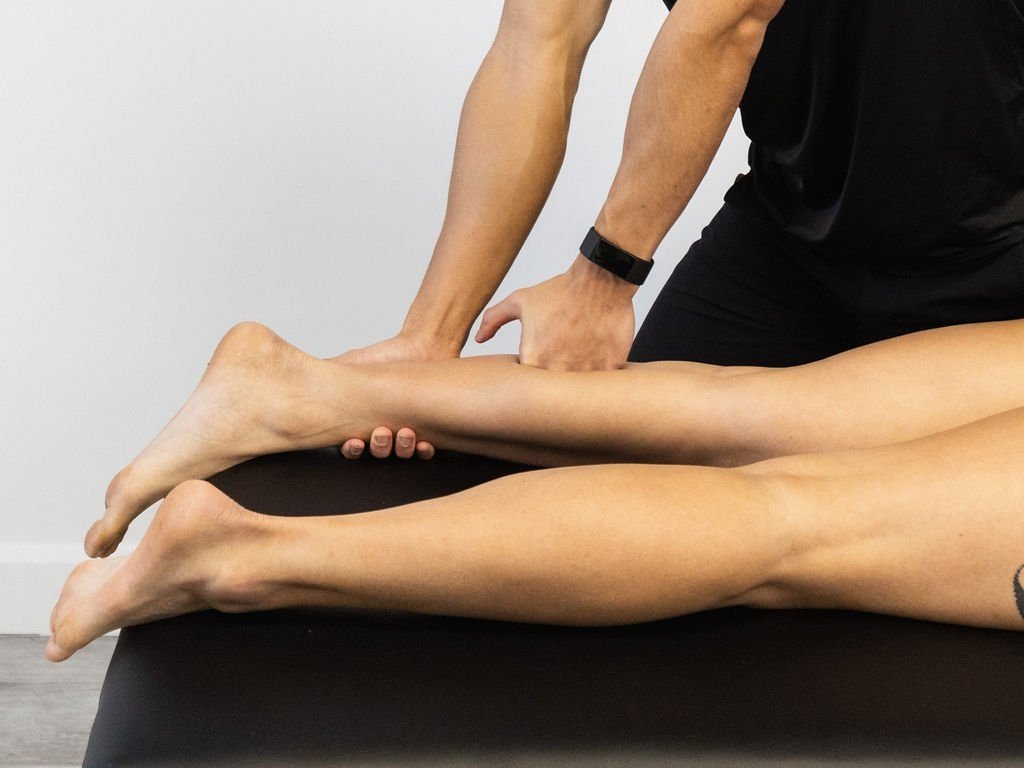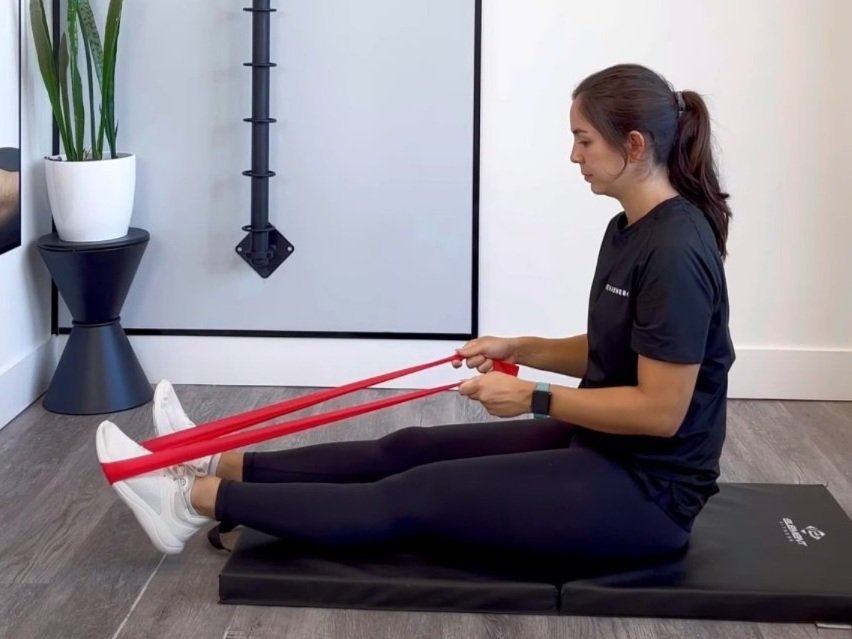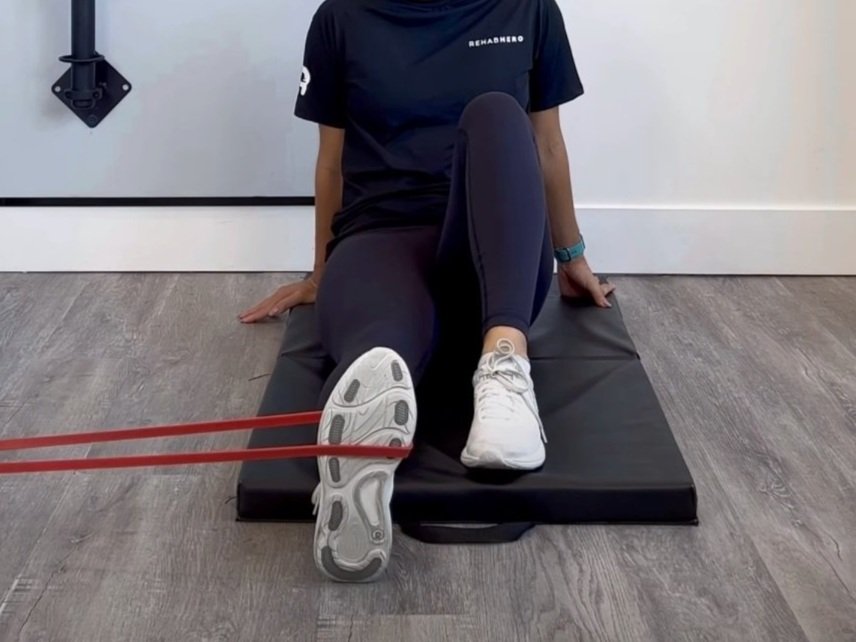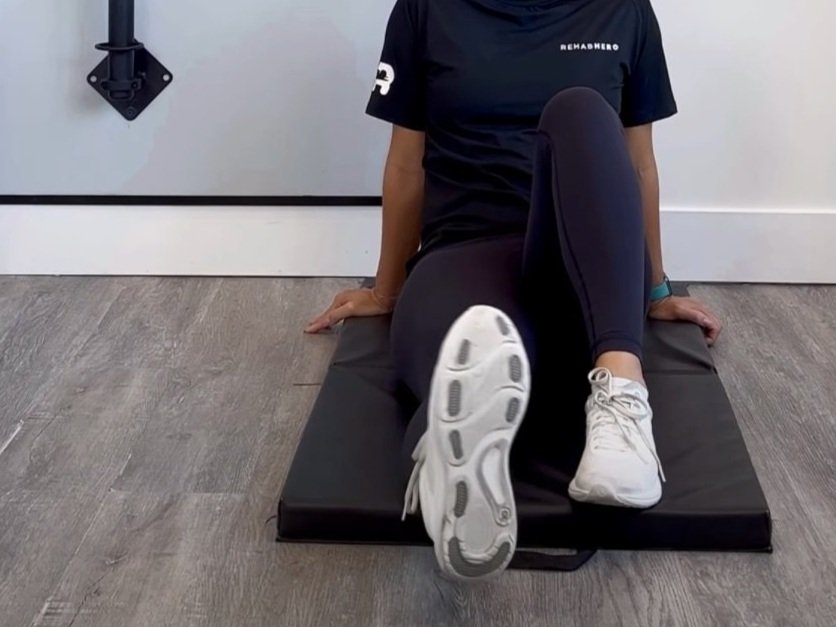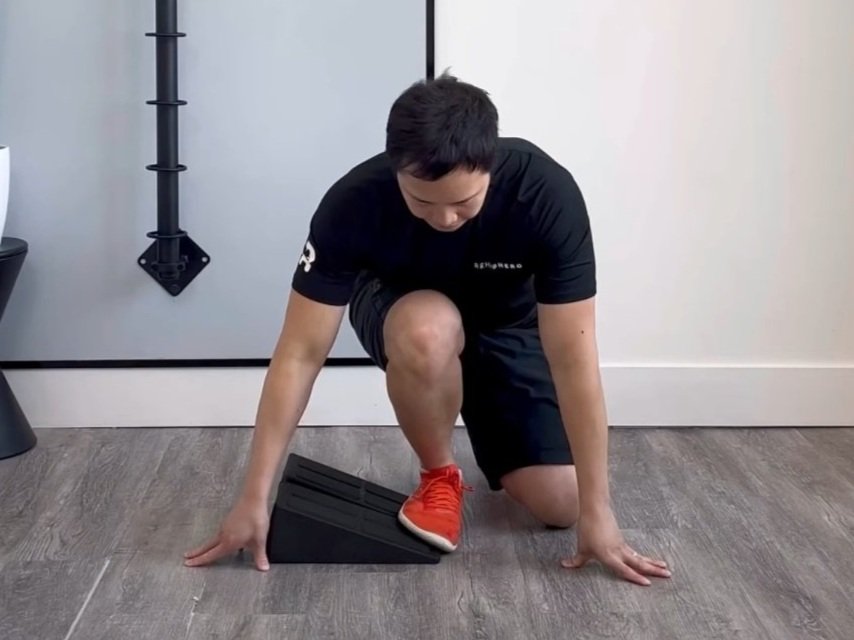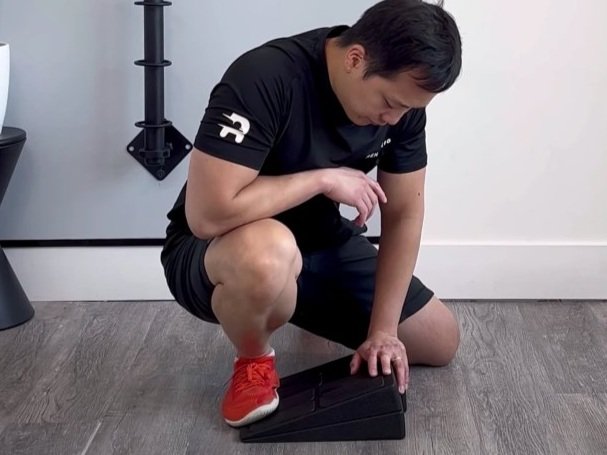Non-Insertional Achilles Tendinopathy
Non-Insertional Achilles Tendinopathy
Research Review of Treatment Options For Pain & Function
What is Achilles Tendinopathy?
The Achilles tendon is a band of tissue that connects your calf muscles to your heel. This band is important for foot and ankle function as it allows your calf muscles to plantarflex your foot (standing on your toes). This motion is important for simple activities like walking and climbing stairs, to jogging, running, sprinting or jumping.
Achilles Tendinopathy is a spectrum of disorders involving the Achilles Tendon. This may range from conditions such as Acute Achilles Tendon Tears to Chronic Achilles Tendinitis.
Achilles Tears tend to happen as a single incidence of high load. Typically this occurs in sedentary middle-aged adults who suddenly become active in high intensity plyometrics or stop-go movements such as those found in Tennis, HIIT workouts, or Basketball. This injury is a result of tissue overload of the Achilles tendon, resulting in a tear or strain. Injuries tend to happen in this population because the tendon is deconditioned is suddenly required to handle high forces.
Achilles Tendinitis is an overuse condition that typically occurs in runners who have rapidly increased their running distance, duration, or intensity. This occurs as the training intensity exceeds the tissue’s ability to recover from each training session, leading to progressive over exertion of the Achilles Tendon. This overload can cause chronic inflammation of the tissue leading to pain and dysfunction.
What Causes Achilles Tendinopathy?
Non-insertional Achilles tendinopathy (NAT) is now believed to be a result of a poor healing response that leads to degeneration of the tendon, resulting in either disruption of normal collagen structure or vasculo-neural ingrowth into the tendon, resulting in pain. Conservative management of NAT has been shown to be an effective treatment route for those suffering for at least a period of 3-6 months. This blog post will examine various treatment options available during a chiropractic or physiotherapy appointment and determine which option (or combination of options) are shown to be the most effective in treating this condition.
Types of Effective Exercises For the Achilles
Eccentric exercise training (EET) has been shown to produce results in NAT. A systematic review examining different EET protocols had determined that the protocol described by Alfredson et al. (1998) had a high quality of evidence and was efficacious at improving both pain and function. This protocol is described with patients performing heel raises, completing 3 sets of 15 repetitions, twice daily with both a straight and bent knee, performed at 7 days a week for 12 weeks. The exercise was performed with or without non-disabling pain, with the load increased once the exercise was performed without pain. The studies that used the Alfredson protocol had reported improvements in VISA-A score ranging from 37% to 111%. Although each study using the Alfredson protocol had reported positive results, the cadence of each repetition was not described in any study and is therefore recommended to complete the repetitions ‘slowly’. Additionally, this data should be interpreted with caution as each had a small sample size. Few other interventions have been studied in isolation from EET and none have shown to be more effective than EET, therefore it is assumed that the majority of patients will have the best outcome using EET. This sentiment is repeated by another review by CMAJ, which have declared EET to be the only intervention with a strong level of evidence.
Do Assistive Devices Like Orthotics Work?
Shoe inserts have been shown to been shown to cause symptomatic improvement through neuromotor changes, but evidence (1 RCT) is limited to male runners. However, sham insoles were not provided to the control group, thus this study may have improper blinding. Orthotics may be helpful if there are identifiable malalignments. Heel lifts have conflicting evidence, but may decrease compressive strain on the Achilles tendon and be helpful during episodes. Heel lifts should be weaned when the condition improves.
Which Modalities Help With Achilles Tendinopathy?
Low Level Laser Therapy (LLLT) in addition to EET has shown conflicting evidence, which may be due to varying methodologies. Additionally, effectiveness was shown to be reduced if the patient was previously treated with steroid injection or with a power density greater than 100 mW/cm^2 was used. If available, your health care practitioner can use LLLT at 6 points 1 cm apart on each side of the tendon with 0.91 J/point using an 820 nm wavelength probe (power density of 60 mW/cm^2) for 12 sessions over 6 weeks.
Does Joint Mobilization or Massage Help With This Diagnosis?
EET combined with manual therapy on joints and soft tissue deficits can improve function and manage symptoms during therapy. Soft tissue therapy (STT) can be applied both parallel or perpendicular to the tendon fibers, but should be avoided if the tendon is in a reactive state. Commonly involved musculature include the posterior thigh (hamstrings), quadriceps, gluteal region, and the calf, which can be treated by addressing trigger points. Yet, a review by CMAJ had determined that there was insufficient amounts of published evidence.
Does Shockwave Therapy Work For This Condition?
EET combined with shockwave therapy can be effective for those who are slow to respond to EET alone. However, a review by CMAJ had determined that the evidence is inconclusive (due to inability to blind), and therefore clinicians should take into consideration the financial cost-benefit when offering it to their patients. They did note a statistically significant change in VISA-A score, however it was determined that this change was not clinically relevant.
When Do You Do Surgery? Is Conservative Care Just As Good and What Is The Protocol For Treatment?
Candidates for Surgery
Surgery for either acute/chronic tendon tear is most suited for young, healthy, active who want to return to activities such as running or jogging
Surgery should be avoided with active infection or unhealthy local skin
Concerns include diabetes, smoking, sedentary lifestyle, steroid use, and inability to follow postoperative instructions.
Post Surgery
cast/ walking boot for 6-12 weeks
Start in Plantar Flexion and adjust boot/cast back to neutral
Total recovery time may be 6 months
What Are The Indicators for Surgery vs Conservative Treatments
Non-Operative
Acute ruptures, sedentary patient, frail patients
Same outcomes with surgery, may have increased risk of re-rupture but level 1 evidence suggest that this can be negated with functional rehabilitation
Operative
Open end-to-end Achilles repair: acute ruptures <6 weeks
Incision medial to tibial nerve, use a non-absorbable suture
Immobilize in 20 degrees for 4-6 weeks
Percutaneous Achilles tendon repair: indicated if concerned over cosmetics of scar
Risk of sural nerve injury
Reconstruction of VY advancement: chronic ruptures with defect <3 cm
V cut with apex at musculotendinous junction, incision through superficial tendinous portion leaving muscle fibers intact
Flexor hallucis longus transfer +/- advancement of gastrocnemius: chronic ruptures with defect >3 cm, requires functioning tibial nerve
Excise tendon edges, release FHL at knot of henry and transfer it through the calcaneus, results in great toe flexion weakness
Ultimately, consult your health care practitioner in-person or online about whether or not your Achilles Tendinopathy requires surgery. Your physiotherapist or chiropractor will be able to examine and diagnose the condition of your Achilles and determine what level of function you are. This will give you a better idea on recovery time, prognosis, and give you the ability to make an informed decision about whether or not surgery is required over conservative exercise plans. Your therapist will also be able to create a plan of management and progressive exercise program to help you get to full recovery.
Written By:
Dr. David Song, Chiropractor, Strength Coach
References
1. Habets B, van Cingel R. Eccentric exercise training in chronic mid-portion Achilles tendinopathy: A systematic review on different protocols. Scandinavian Journal Of Medicine & Science In Sports [serial on the Internet]. (2015, Feb), [cited September 5, 2017]; 25(1): 3-15. Available from: SPORTDiscus with Full Text.
2. McClinton S, Luedke L, Clewley D. Nonsurgical Management of Midsubstance Achilles Tendinopathy. Clinics In Podiatric Medicine And Surgery [serial on the Internet]. (2017, Apr 1), [cited September 5, 2017]; 34(Achilles Tendon Pathology): 137-160. Available from: ScienceDirect.
3. Scott A, Huisman E, Khan K. Conservative treatment of chronic Achilles tendinopathy. CMAJ: Canadian Medical Association Journal = Journal De L'association Medicale Canadienne [serial on the Internet]. (2011, July 12), [cited September 5, 2017]; 183(10): 1159-1165. Available from: MEDLINE with Full Text.
4. http://www.aofas.org/footcaremd/treatments/Pages/Achilles-Tendon-Rupture-Surgery.aspx
5. https://www.webmd.com/a-to-z-guides/surgery-for-an-achilles-tendon-rupture
6. Longo U, Ronga M, Maffulli N. Acute Ruptures of the Achilles Tendon. Sports Medicine & Arthroscopy Review [serial on the Internet]. (2009, June), [cited May 10, 2018]; 17(2): 127-138. Available from: SPORTDiscus with Full Text.
7. https://www.orthobullets.com/foot-and-ankle/7021/achilles-tendon-rupture

